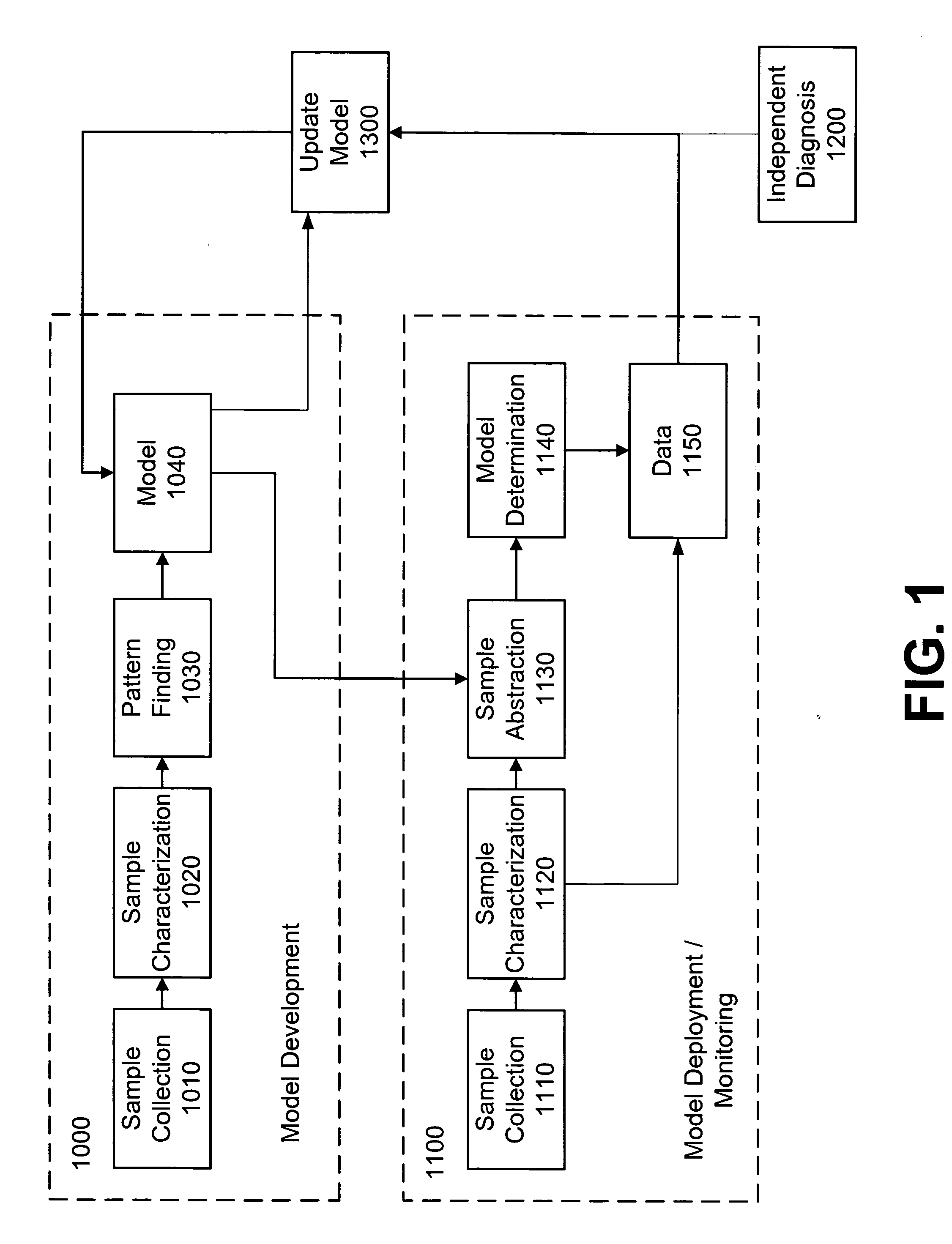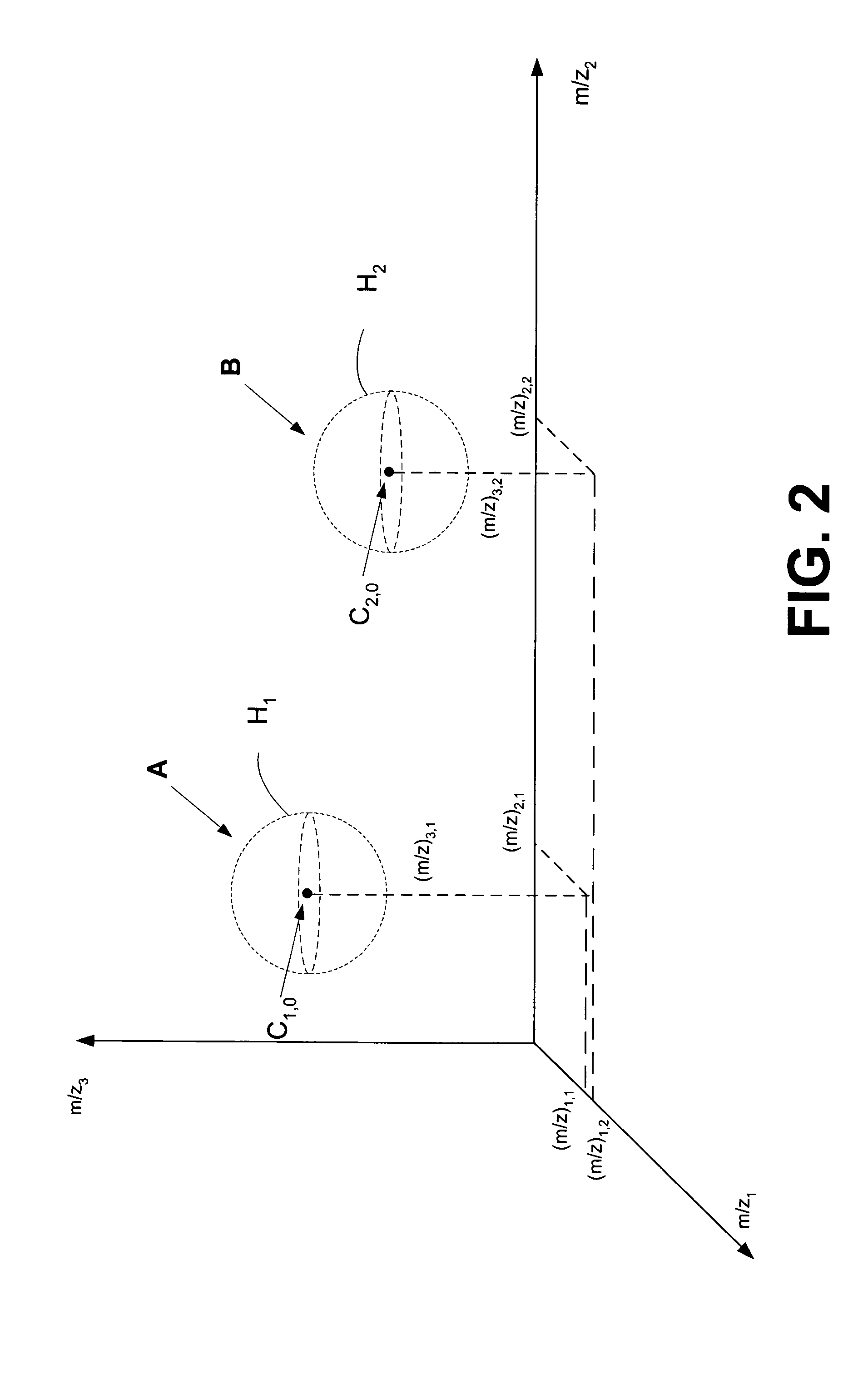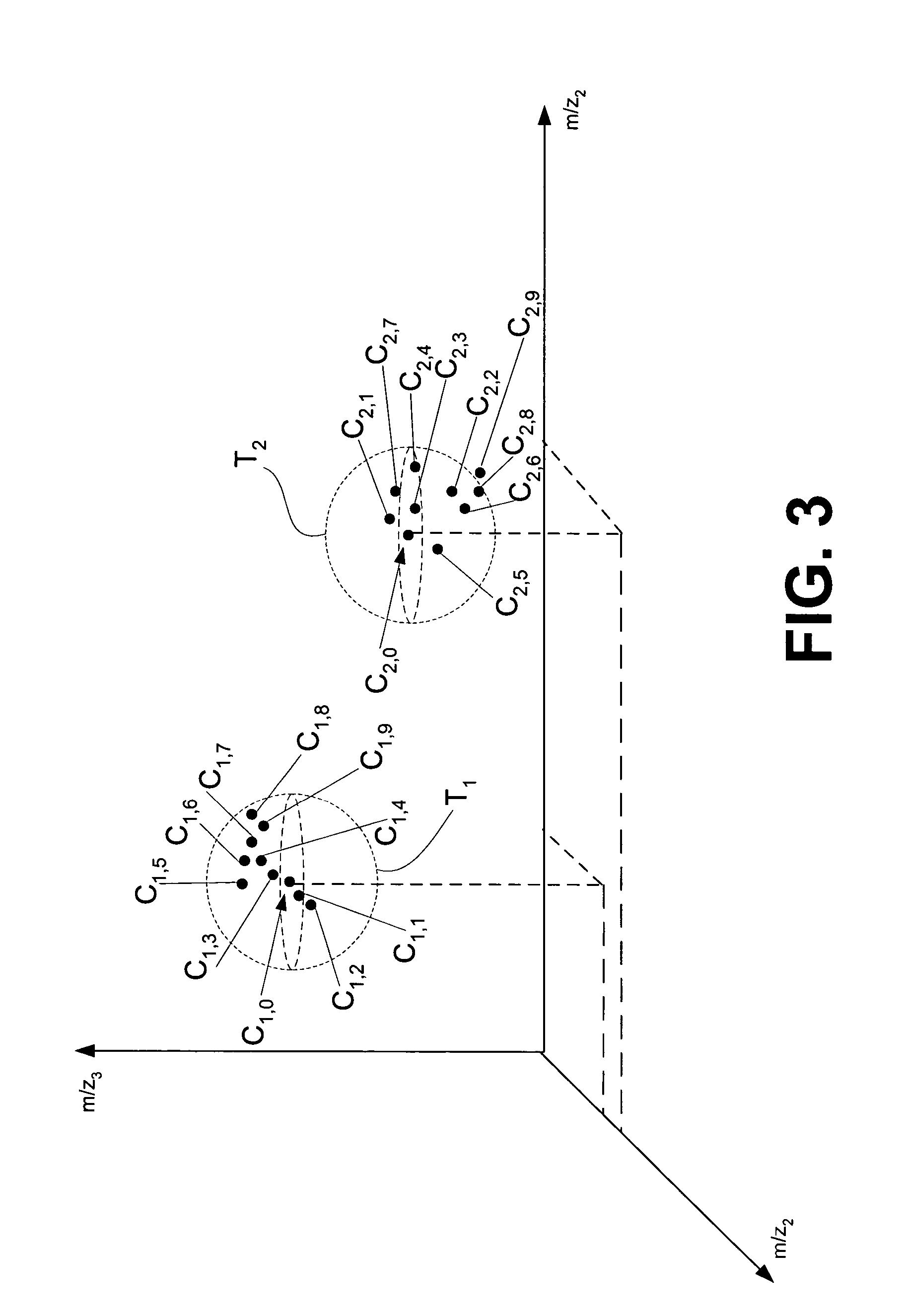Method of diagnosing biological states through the use of a centralized, adaptive model, and remote sample processing
a biological state and adaptive model technology, applied in the field of biological data collection, selection, transmission, analysis through the use of a centralized bioinformatics modeling system, can solve the problems of model validity and utility, and achieve the effect of assessing the viability of the model
- Summary
- Abstract
- Description
- Claims
- Application Information
AI Technical Summary
Benefits of technology
Problems solved by technology
Method used
Image
Examples
Embodiment Construction
[0019] Generally, the invention includes a method of determining the biological state of an unknown sample using a diagnostic model based on an initial set of biological samples taken from subjects having known biological states, using unknown samples to assess the continuing validity of the assumption that the initial sample set accurately reflects the population from which the unknown samples are taken and to determine whether the model should be updated, and updating the model using at least some of the new biological samples.
[0020] Various terms are used herein to describe diagnostic models and their development, monitoring, and updating.
[0021] As used herein, the term “feature” refers to a value from among a range of values produced by a bioassay of a sample. For example, in the case of a mass spectrum derived from a sample by a protein separation technique, the mass spectrum is defined by a range of mass-to-charge (m / z) values, and a feature is a particular m / z value.
[0022]...
PUM
 Login to View More
Login to View More Abstract
Description
Claims
Application Information
 Login to View More
Login to View More - R&D
- Intellectual Property
- Life Sciences
- Materials
- Tech Scout
- Unparalleled Data Quality
- Higher Quality Content
- 60% Fewer Hallucinations
Browse by: Latest US Patents, China's latest patents, Technical Efficacy Thesaurus, Application Domain, Technology Topic, Popular Technical Reports.
© 2025 PatSnap. All rights reserved.Legal|Privacy policy|Modern Slavery Act Transparency Statement|Sitemap|About US| Contact US: help@patsnap.com



